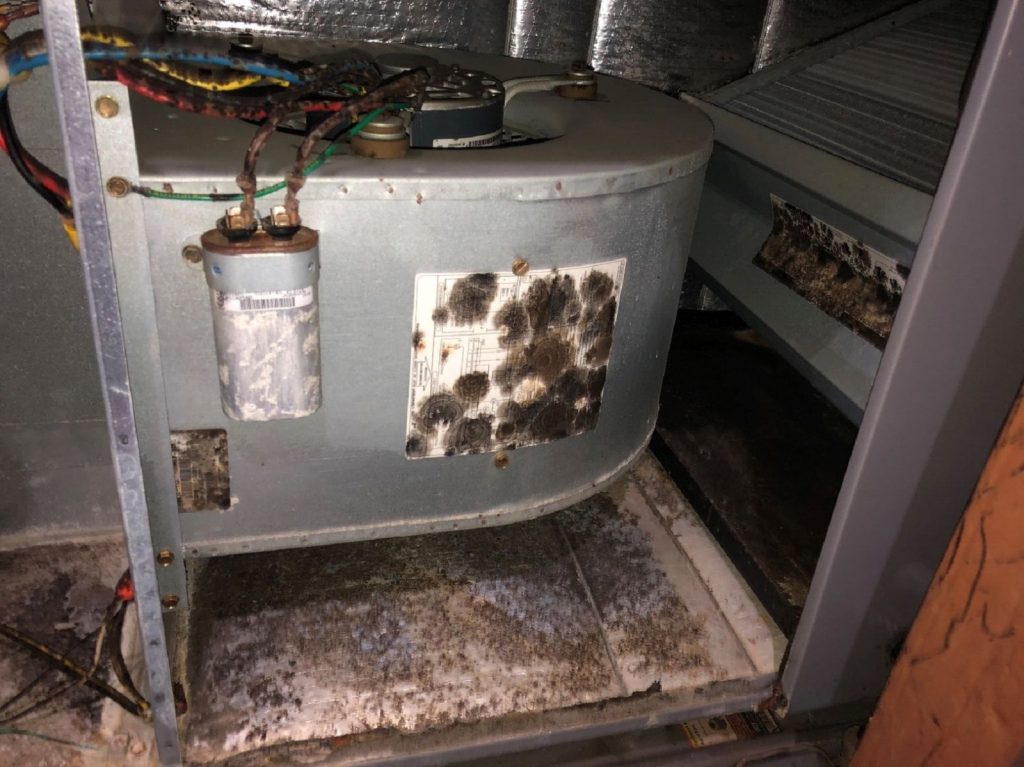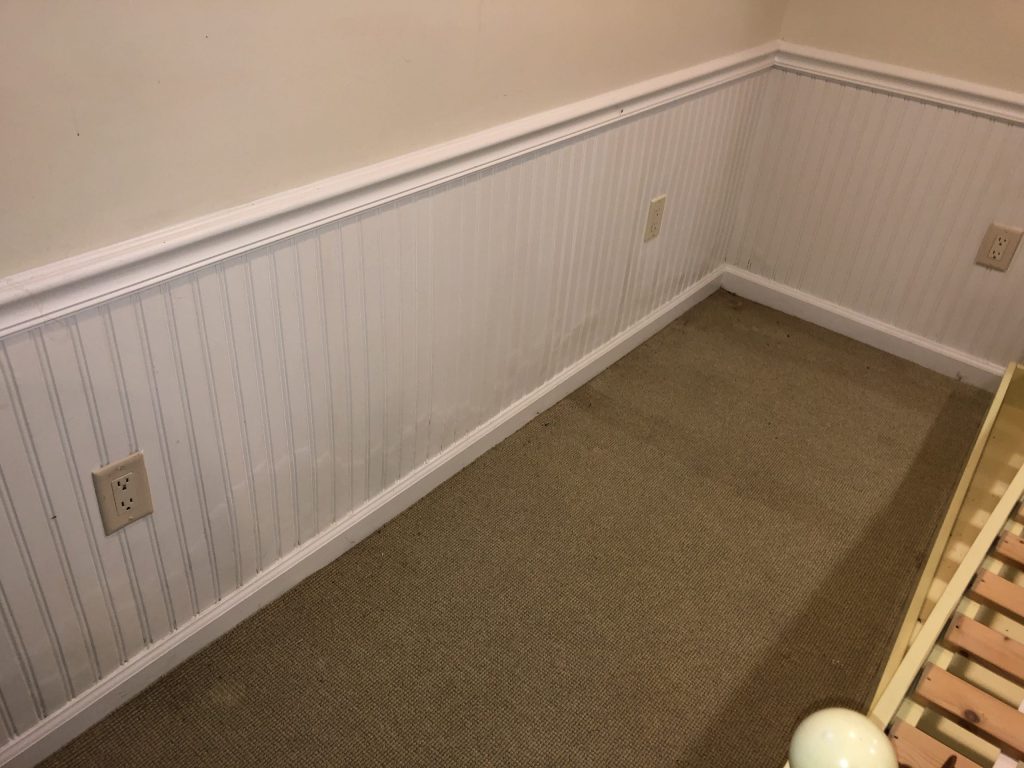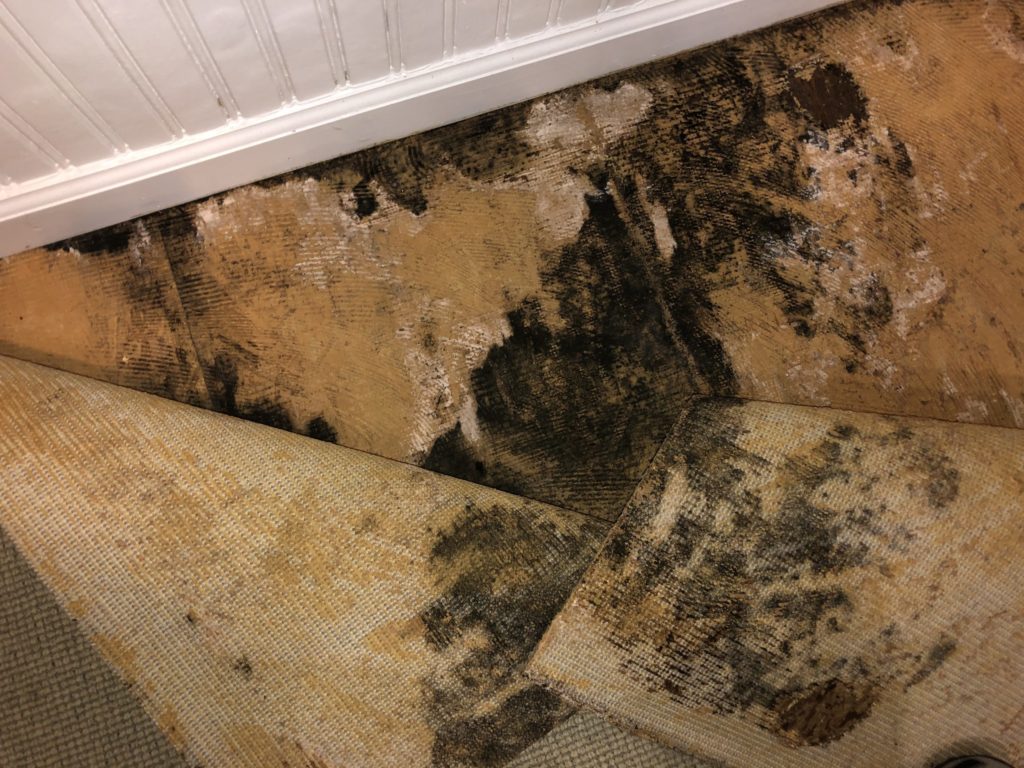


What is a Mold Inspection?
A mold inspection starts with an interview of the client to help us understand the concerns of the occupants, a history in the property of any past water damage, any odors or any major changes to the structure that can aid in our mold & indoor air quality assessment.
A mold inspection is a thorough visual observation of the home, particularly any Basement, Crawlspace & Attic Areas, Bathrooms, Kitchens the Central AC/HVAC (heating ventilation air conditioning system), to identify signs of mold growth, water damage, ventilation & humidity issues. We must look at the home from a holistic sense by understanding & evaluating all the moving parts of the building, how they interact together & how they can affect the occupants. As many of our clients have asthma and allergies, and some more serious ailments including CIRS (chronic inflammatory response syndrome), MCAS (mast cell activation syndrome) & Lyme Disease, a complete & thorough inspection of the home is very important to identify all problem areas, and by conducting a mold inspection we can identify or rule out possible contamination within your residence or workplace and determine any sources of allergens & contaminants in the home.
Many advanced inspection tools are utilized during the inspection, including moisture mapping of the building materials is conducted, using a moisture meter and a Thermal Imaging Camera to determine if there are any ongoing leaks and to identify any sources of moisture, in Basements, Attics, Bathrooms & Kitchens, around windows, etc, while collecting measurements of the air quality including respirable particles, temperature & humidity, VOC’s (volatile organic compounds) & formaldehyde during the inspection process.
The inspection may include some invasive measures including checking wall and ceiling cavities, beneath carpeting, inside access panels, etc and always includes inspecting the HVAC/AC & ductwork.
The goal of the inspection is to identify all problem & source areas before any mold sampling/testing is even considered.
Per the New York State Mold Law, any mold greater than 10 Square Feet requires an independent assessment by a New York State Licensed Assessor. Mold remediation companies cannot provide an estimate for mold remediation without a remediation plan/protocol from a third-party company. This is one extra step in the process, but it is to ensure that the consumer is protected from any unscrupulous contractors and illegitimate practices. READ: NYS Mold Law
HNST Mold Inspections had been providing Independent Mold Inspections since 2010 prior to the New York State Mold Law going into effect in January of 2016) The new law compounded our business model which is and always was to provide independent assessments, advice & guidance to our clients.
If you suspect that you may have potential mold contamination within your home or workplace the first step is to contact an HNST Mold Inspections to determine if a mold problem may exist or not. Many mold removal companies in New Jersey, Connecticut & Pennsylvania require that an inspection be conducted, and a mold removal protocol be provided prior to them supplying an estimate. We offer free phone consultations.
Post Remediation Verification Inspection
Following any mold remediation project, it is highly recommended that a clearance inspection be conducted to ensure that the remediation was performed adequately. The areas will be visually inspected including the collection of air, surface, or dust samples inside and outside of the remediated areas. The remediated areas should be free of visible mold, dust, and debris and should pass and air quality sample. New York State Mold Law Requires that a post-remediation inspection be conducted, however, this is the client’s choice and not mandated under the law that the “client” must do so.
What is Mold Testing?
Mold testing is a very limited tool that can be used to evaluate indoor microbial levels in the air, mold fragments & dna in the dust and to document suspect mold growth on surfaces. Mold testing should not and can never be used as the only method to identify or to rule out and indoor contamination & is not an alternative to a detailed Mold Inspection of the home and identifying sources of contamination.
Testing for mold does not identify hidden sources of mold, does not identify how or where water is entering the building or what is causing the mold. Testing for mold does not determine the methods of cleaning, products to use or the overall safety of the environment.
Air quality mold samples can be collected to identify the airborne levels of mold present within the indoor environment beyond what we can see, but is limited to a very short window of time. Surface mold samples are collected using a sterile swab or tape lift method to identify the types of molds growing on the building materials and are sometimes beneficial to identify species.
Dust samples can provide valuable information as to the overall fungal load in the home and potential mycotoxin production & exposure.
There are several types of mold sampling & analysis methods available, the most common & widely used method in the industry being non-viable which does not differentiate between active or dormant (dead) mold spores. According to the EPA, active molds or dormant molds may be just as harmful to sensitive individuals. Also, according to the EPA, in most cases if mold is visible, sampling is not warranted. READ: Recommendations by EPA
These samples are collected using an air pump and the use of a spore trap cassette which draws the airborne particulates onto an adhesive slide. These samples are analyzed using direct microscopy and the molds are identified to a genus level by an AIHA (American Industrial Hygienists Association) Laboratory.
Viable air quality mold samples only identify the mold spores that are alive or active but do not identify the dormant or dead mold spores. The collection method for air samples utilizes the use of an air pump that pulls the air through an agar media on a petri dish which is then incubated at the laboratory for a period of 7-10 days. This method can identify the species of the mold however is not always accurate as only 10% of the actual molds present may be reported. The advantage of this method is that it’s a cost effective way to identify species.
Beyond mold, indoor allergens include common household dust which comprises pet dander, human skin cells, insect fragments, fibers, dust mites, and different types of pollen. These particulates are all considered irritants and the can cause allergic reactions in sensitive individuals. HNST Mold Inspections can have your mold samples analyzed with these additional irritants identified using a single collection method.
ERMI (environmental relative moldiness index) sampling methods are also available and use MSQPCR (mold specific quantitative polymerase chain reaction) analysis methods & Enzyme-linked immunosorbent assay (ELISA) for the identification of mycotoxins.



